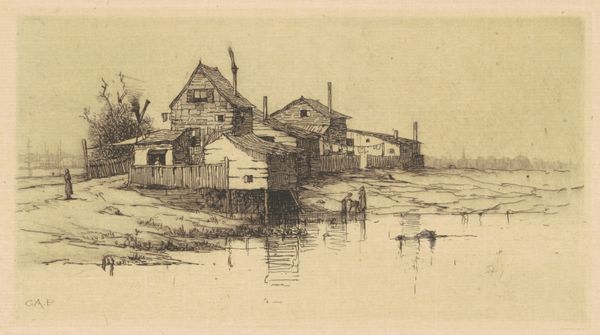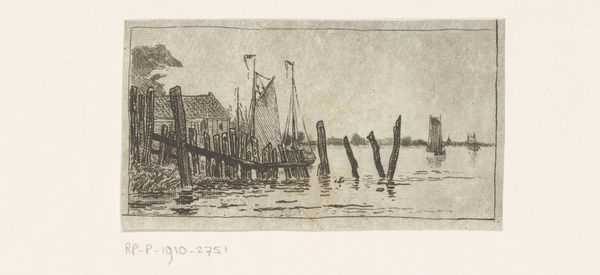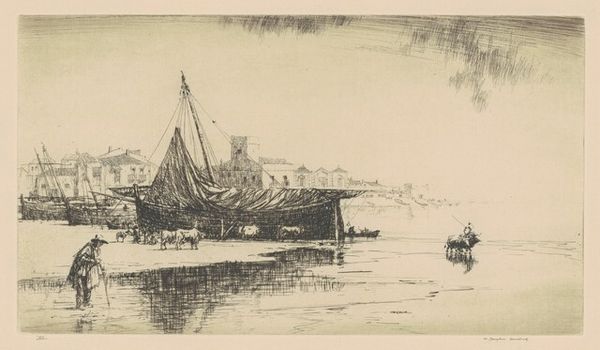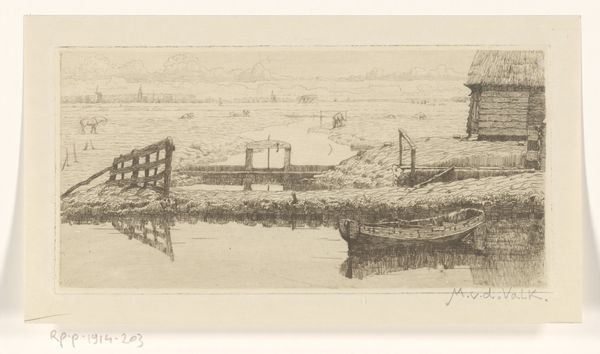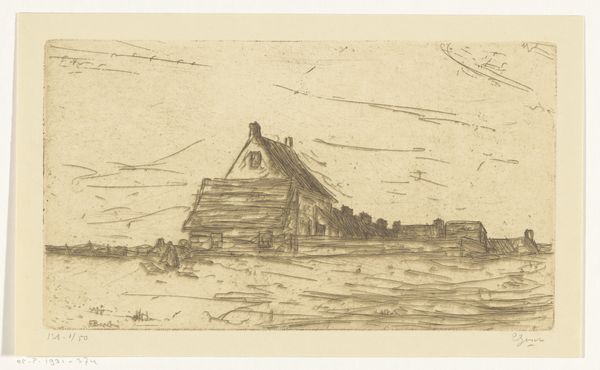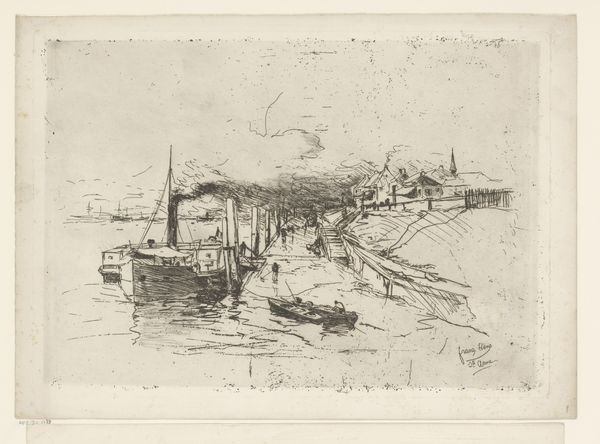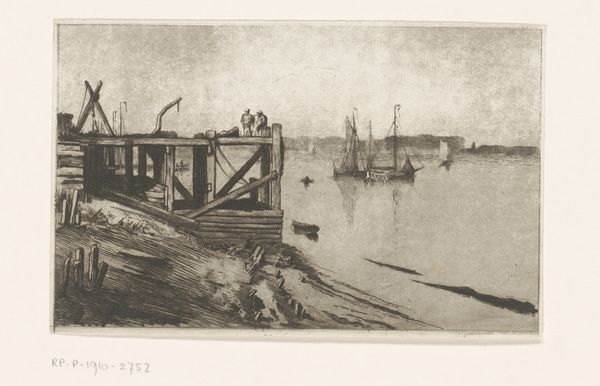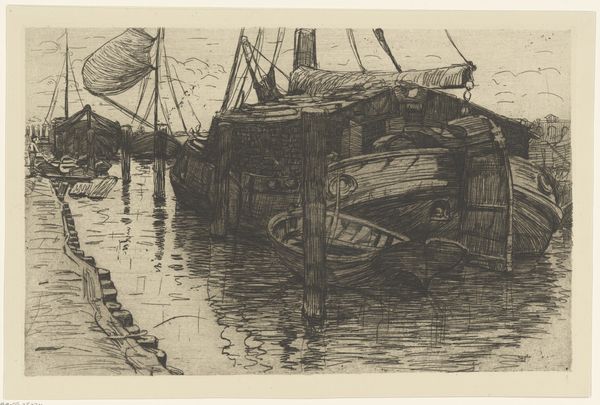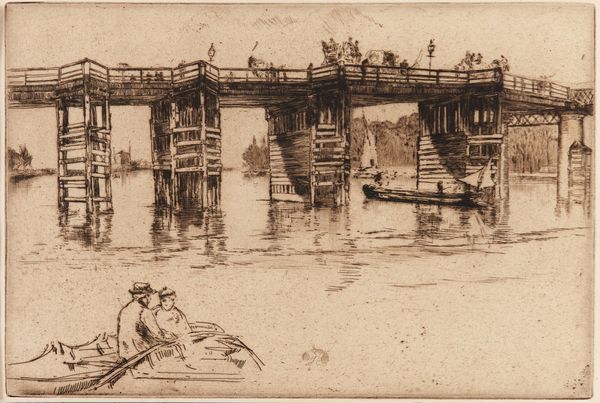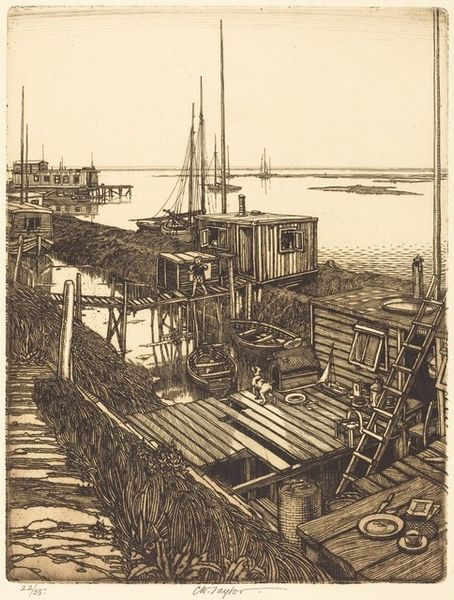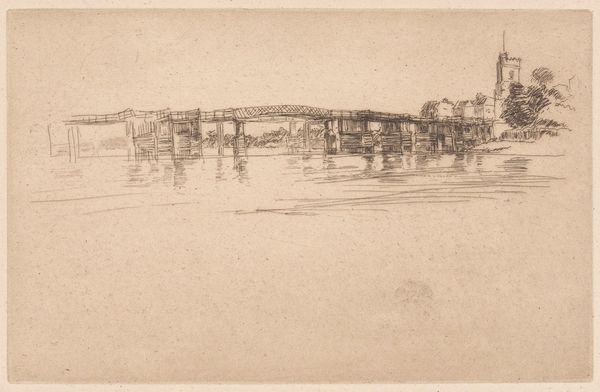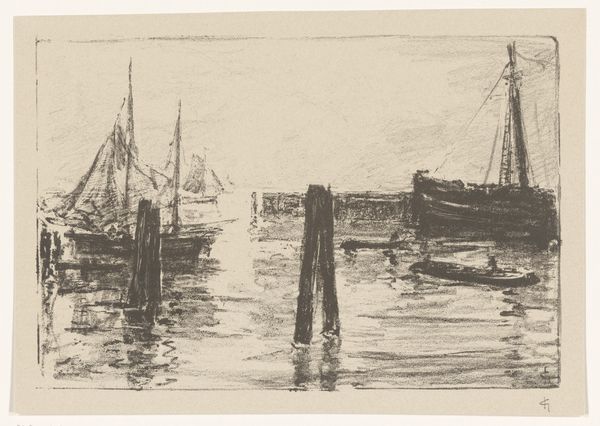
print, etching
# print
#
etching
#
landscape
#
cityscape
#
realism
Dimensions: plate: 6.99 × 11.43 cm (2 3/4 × 4 1/2 in.) sheet: 23.5 × 31.12 cm (9 1/4 × 12 1/4 in.)
Copyright: National Gallery of Art: CC0 1.0
Charles A. Platt created this etching, "Salt Shanties," capturing a waterside scene. Platt, active in the late 19th and early 20th centuries, was part of the American Etching Revival, which saw artists turning to printmaking as a valued art form. This image shows a cluster of weathered buildings on stilts, likely used for salt production, reflected in the calm water. Platt's choice to depict these utilitarian structures speaks to the changing landscape of American art at the time. As industrialization transformed the nation, artists began finding beauty not just in traditional landscapes, but also in the built environment. This is not an idealized view of nature, but a realistic portrayal of how industry and nature coexisted. The shanties and their reflections evoke a sense of quiet industry. Consider the labor that took place here, and the lives of the people who worked in these salt shanties. Through Platt’s eyes, we can appreciate the beauty and dignity of these everyday scenes.
Comments
No comments
Be the first to comment and join the conversation on the ultimate creative platform.
